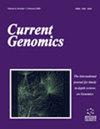基因组对决:乳酸杆菌属和粘液酵母菌益生菌潜力的硅学比较
IF 1.4
4区 生物学
Q4 BIOCHEMISTRY & MOLECULAR BIOLOGY
引用次数: 0
摘要
导言:肠道微生物群在维持人体健康方面发挥着至关重要的作用,益生菌因其潜在的益处而备受关注。在多种多样的肠道细菌中,Akkermansia muciniphila 和乳酸杆菌因其潜在的益生特性而成为有希望的候选菌。研究方法在本研究中,我们对粘液鞘氨醇和乳酸杆菌的基因组进行了全面的比较硅分析,以解读它们的益生潜力。利用一系列生物信息学工具,我们评估了各种基因组属性,包括功能基因含量、代谢途径、抗菌肽生产、粘附因子和应激反应元件。这些发现揭示了两个属之间独特的基因组特征。A. muciniphila基因组中粘蛋白降解酶的含量较高,这表明它们专门适应了肠道环境中粘蛋白的利用。结果:此外,短链脂肪酸生产的特殊途径突出了其对宿主健康的潜在影响。另一方面,乳酸杆菌基因组展示了与益生菌属性相关的多种功能基因,包括生产抗微生物肽和粘附因子,这表明乳酸杆菌具有宿主-微生物相互作用和免疫调节的潜力。此外,这项分析还揭示了这两个菌属耐受压力的遗传基础,揭示了在肠道生态系统动态条件下生存的保守机制。结论这项研究还揭示了抗生素耐药性基因的分布情况,使我们能够评估与它们可能用作益生菌相关的安全问题。总之,这项硅学比较探索为了解粘多糖酵母菌和乳酸杆菌益生菌潜力的基因组基础提供了宝贵的见解。这些发现有助于人们了解它们各自在肠道微生物群中的作用,并为进一步的实验研究奠定了基础。随着益生菌应用范围的不断扩大,这项研究增进了我们对支配益生菌功能的基因基础的了解,并为未来的治疗干预和个性化健康策略指明了前景广阔的途径。本文章由计算机程序翻译,如有差异,请以英文原文为准。
Genomic Face-Off: An In Silico Comparison of the Probiotic Potential of Lactobacillus spp. and Akkermansia muciniphila
Introduction: The gut microbiota plays a crucial role in maintaining human health, and probiotics have gained significant attention for their potential benefits. Among the diverse array of gut bacteria, Akkermansia muciniphila, and Lactobacillus spp. have emerged as promising candidates for their putative probiotic properties. Method: In this study, we conducted a comprehensive comparative in silico analysis of the genomes of A. muciniphila and Lactobacillus to decipher their probiotic potential. Utilizing a range of bioinformatics tools, we evaluated various genomic attributes, including functional gene content, metabolic pathways, antimicrobial peptide production, adhesion factors, and stress response elements. These findings revealed distinctive genomic signatures between the two genera. A. muciniphila genomes exhibited a high prevalence of mucin-degrading enzymes, suggesting a specialized adaptation for mucin utilization in the gut environment. Results: Additionally, the presence of specific pathways for short-chain fatty acid production highlighted its potential impact on host health. Lactobacillus genomes, on the other hand, demonstrated a diverse repertoire of functional genes associated with probiotic attributes, including the production of antimicrobial peptides and adhesion factors, indicating potential for host-microbe interactions and immune modulation. Furthermore, this analysis unveiled the genetic basis of stress tolerance in both genera, revealing conserved mechanisms for surviving the dynamic conditions of the gut ecosystem. Conclusion: This study also shed light on the distribution of antibiotic-resistance genes, allowing us to assess safety concerns associated with their potential use as probiotics. Overall, this comparative in silico exploration provides valuable insights into the genomic foundation of A. muciniphila and Lactobacillus probiotic potential. These findings contribute to the understanding of their respective roles within the gut microbiota and offer a foundation for further experimental investigations. As probiotic applications continue to expand, this study advances our knowledge of the genetic underpinnings that govern their functionality and highlights promising avenues for future therapeutic interventions and personalized health strategies.
求助全文
通过发布文献求助,成功后即可免费获取论文全文。
去求助
来源期刊

Current Genomics
生物-生化与分子生物学
CiteScore
5.20
自引率
0.00%
发文量
29
审稿时长
>0 weeks
期刊介绍:
Current Genomics is a peer-reviewed journal that provides essential reading about the latest and most important developments in genome science and related fields of research. Systems biology, systems modeling, machine learning, network inference, bioinformatics, computational biology, epigenetics, single cell genomics, extracellular vesicles, quantitative biology, and synthetic biology for the study of evolution, development, maintenance, aging and that of human health, human diseases, clinical genomics and precision medicine are topics of particular interest. The journal covers plant genomics. The journal will not consider articles dealing with breeding and livestock.
Current Genomics publishes three types of articles including:
i) Research papers from internationally-recognized experts reporting on new and original data generated at the genome scale level. Position papers dealing with new or challenging methodological approaches, whether experimental or mathematical, are greatly welcome in this section.
ii) Authoritative and comprehensive full-length or mini reviews from widely recognized experts, covering the latest developments in genome science and related fields of research such as systems biology, statistics and machine learning, quantitative biology, and precision medicine. Proposals for mini-hot topics (2-3 review papers) and full hot topics (6-8 review papers) guest edited by internationally-recognized experts are welcome in this section. Hot topic proposals should not contain original data and they should contain articles originating from at least 2 different countries.
iii) Opinion papers from internationally recognized experts addressing contemporary questions and issues in the field of genome science and systems biology and basic and clinical research practices.
 求助内容:
求助内容: 应助结果提醒方式:
应助结果提醒方式:


